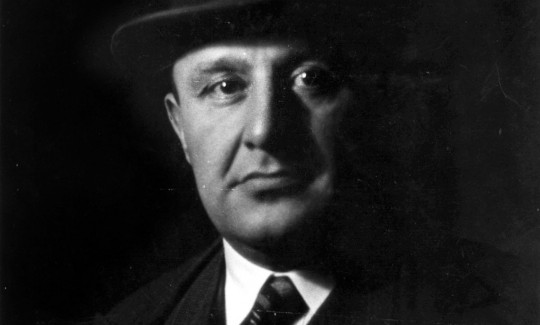Felix Tikotin
Felix Tikotin
Felix Tikotin, was born in Glogau, Germany in 1893. His family probably hailed from the town of Tikocyn on the Polish-Russian border, whence derives the name. He grew up in Dresden, where he became friendly with the group of artists known as "Die Bruecke". He had already begun to collect art works while still a high-school student, and wanted to be an artist himself. He studied architecture in Munich and, after completing his studies, worked, among others, with the architect Eric Mendelssohn, who became famous in Israel in the 1930s.
During the First World War, Felix Tikotin served as an oficer in the army of the Kaiser. Before the war he had visited Paris, where he saw some noted collections of Japanese art, and from that time he began collecting any Japanese art that came his way. When he had amassed sufficient means, he decided to make his old dream come true, and travelled to Japan on the Trans-Siberian Railway, together with Dr. Fritz Rumpff, a well-known academic, his close friend and spiritual mentor. The journey was the first of his many trips to Japan, the beginning of his life as a professional rather than an amateur collector. Tikotin returned from this journey loaded with Japanese art works. Later he would import Japanese handicrafts to Germany in order to sell them.
Before the Nazis came to power, Berlin was a centre of culture and bohemian life. There, in April 1927, at midnight, Tikotin opened a gallery of Japanese art with an exhibition about ‘Demons and Ghosts'. His friend Dr. Rumpff wrote the introduction to the catalogue. His frequent exhibitions established Tikotin's international reputation as an expert in Japanese art. In 1932 he was approached by Dr. Kuemmel, the director of Berlin's municipal museum, and a member of the city council, a well-known Nazi. Dr. Kuemmel asked Tikotin to prepare a big exhibition of Japanese art to represent Berlin in Copenhagen. Most of his private collection was exhibited in the exhibition. When it closed, Tikotin went to Denmark to oversee the packing and dispatch of the collection back to Germany. But when he arrived he was met by his Danish friend Henriques, and discovered that the latter had given orders not to send the exhibition to Berlin, but to Holland. On the night that Tikotin traveled to Copenhagen, the Reichstag was burned down, after Hitler had come to power.
In Holland, all the works were stored away, and thus saved from the Nazis in Germany. The few items remaining in Germany were sent to Tikotin by a friend/assistant as "samples with no commercial value". Tikotin settled in Amsterdam, where he met his future wife. Together they went to Japan on a business trip, and married in the United States en route. They returned to Europe from their travels with many works of art, as well as a Japanese expert to help Tikotin care for the collection. He and his wife took up residence in The Hague, where their two daughters were born. The gallery was in their house. When the Germans invaded Holland, the family was forced to leave the coast and, when the situation became worse for the Jews, the Dutch resistance helped them to find hiding places. The collection, hidden by honest neighbours, was stolen during the war.
After the war, Tikotin renewed his activities as collector and dealer in Japanese art. This was not easy because, during the war, Japan had conquered the Dutch East Indies, later Indonesia, a Dutch colony, and there was much anti-Japanese feeling in Holland. However, Tikotin managed to convince clients and friends that art is more powerful than animosity. Tikotin became once more a well-known personality among art historians and collectors, and he was invited to mount exhibitions throughout Europe and the United States. He helped private collectors to build up their collections, some of which can be found today in museums worldwide. In 1950, five years after the war, the Dutch police turned to him for expert advice, having caught thieves who were trying to escape across the border with smuggled Japanese art works. To Tikotin's amazement, he realized that this was his own collection, which had been stolen during the war.
Tikotin first visited Israel in 1956. During that visit he decided that his collection, miraculously recovered twice, belonged in Israel. He helped to build the first exhibition hall of the Museum, purchased the Kisch House, and in 1960 the Museum of Japanese Art opened its doors to the public. Later plans were made to expand the premises by the renowned Japanese architect Junzo Yoshimura.
Felix Tikotin died in Switzerland in 1986, just before his ninety-third birthday.
Ilana Druker-Tikotin, Chairwoman, Board of Trustees
The Tikotin Museum of Japanese Art

